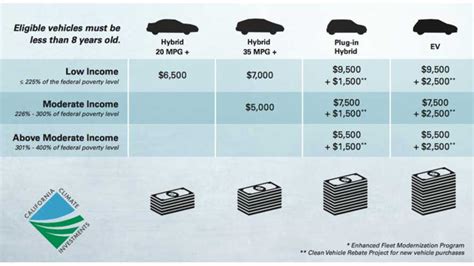As environmental awareness grows and technology advances, electric vehicles (EVs) have emerged as a viable alternative to traditional gasoline-powered cars. However, the initial purchase price of electric vehicles can still be daunting for many consumers. To alleviate this financial barrier, various incentives and rebates have been introduced across the world, making electric driving more affordable than ever. This article explores how electric car rebates can significantly lower costs, promoting a cleaner and greener future for everyone.
Understanding Electric Car Rebates
Electric car rebates are financial incentives provided by federal, state, and local governments to encourage the adoption of electric vehicles. These rebates can significantly reduce the upfront cost of purchasing or leasing an EV, making it an attractive choice for budget-conscious consumers.
Types of Rebates
Rebates can be categorized into several types:
- Federal Incentives: In the United States, the federal government offers a tax credit of up to $7,500 for qualifying electric vehicles. This credit phases out for automakers that have sold over 200,000 electric vehicles.
- State Incentives: Many states provide additional rebates ranging from a few hundred to several thousand dollars. For example, California residents can receive up to $2,500 from the Clean Vehicle Rebate Project.
- Local Incentives: Some cities and counties also have their own rebate programs, which may include tax exemptions, reduced vehicle registration fees, or cash incentives.
- Utility Incentives: Electric utility companies may offer rebates or special pricing plans for EV owners to encourage off-peak charging.
How Rebates Lower the Cost of Electric Vehicles
The most obvious benefit of electric car rebates is the direct reduction in purchase price. For example, a new electric vehicle priced at $30,000 with a federal rebate of $7,500 reduces the effective cost to $22,500. This immediate financial relief allows more consumers to enter the electric vehicle market.
Long-Term Savings
The savings don’t stop at the purchase price. Electric vehicles generally have lower operating costs than their gasoline counterparts. According to the U.S. Department of Energy, EVs have significantly lower fuel and maintenance costs. When combined with rebates, the overall savings can be substantial, making it easier for consumers to justify the initial investment in green technology.
Environmental Benefits
Choosing an electric vehicle not only saves money but also contributes to environmental sustainability. With fewer emissions than traditional cars, EVs help improve air quality and reduce our carbon footprint. Rebates encourage more people to make the switch to electric, amplifying these positive environmental impacts.
Challenges and Considerations
While the benefits of rebates are compelling, there are also challenges to consider. Not all electric vehicles are eligible for federal or state rebates, and the process to claim these incentives can sometimes be confusing. Consumers must conduct thorough research to understand which programs are available in their area and ensure their chosen vehicle qualifies.
Access and Availability
The availability of models eligible for rebates can vary significantly between urban and rural areas. In larger cities, a wider variety of electric vehicles may be accessible at local dealerships, whereas rural areas may have fewer options. This can limit the choices available for consumers looking to take advantage of rebate programs.
Conclusion
Electric car rebates are an essential tool in making green driving more affordable and accessible. By reducing the initial purchase price and encouraging the transition to electric vehicles, these incentives play a crucial role in promoting environmental sustainability. While there are challenges associated with availability and eligibility, the long-term financial savings and positive environmental impacts make electric vehicles an appealing choice for future-minded consumers. By embracing these rebates, individuals can unlock significant savings while contributing to a cleaner, healthier planet.
FAQs
1. What is the federal electric vehicle tax credit?
The federal electric vehicle tax credit offers up to $7,500 to eligible buyers of new electric vehicles in the U.S. However, it phases out after the manufacturer sells 200,000 qualifying vehicles.
2. How do I find out about state and local rebates?
You can check your state’s energy office website or local government resources for updates on available rebate programs and eligibility requirements.
3. Do rebates apply to used electric vehicles?
Most rebates are designated for new electric vehicle purchases. However, some states may have programs that offer limited incentives for used EVs.
4. Can I combine federal and state rebates?
Yes, in most cases, you can combine federal and state rebates as long as the vehicle qualifies for both programs.
5. What are utility incentives?
Utility incentives include discounts or rebates offered by your electric company to lower the cost of charging an electric vehicle, particularly during off-peak hours.
This HTML code provides a structured article about electric car rebates, emphasizing their benefits, challenges, and FAQs, while adhering to the requested format.
Download Electric Car Ca Rebate
